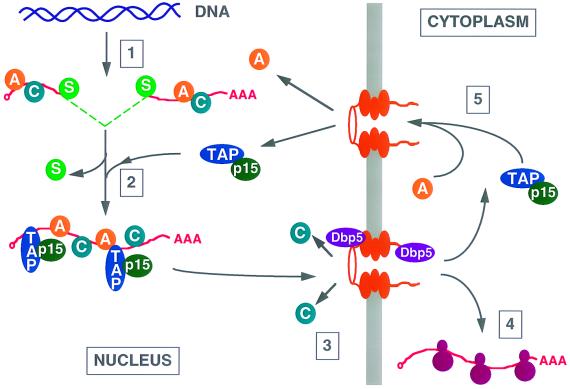FIG. 3.
Model of vertebrate mRNA export. Pre-mRNA molecules are transcribed by RNA polymerase II (step 1) and rapidly assembled into RNPs containing several hnRNPs (indicated by the letter A or C) and splicing commitment factors (S). These pre-mRNAs cannot access nuclear RNA export factors (unless they contain a retroviral RNA export signal) and are retained in the nucleus. However, after completion of splicing, commitment factors are released and, by an unknown mechanism, nuclear mRNA export factors, including Tap and its cofactor p15, are recruited to the resultant mature mRNA (step 2). The RNP containing the mature mRNA then docks at the NPC (step 3) and exits the nucleus. At this time, nonshuttling hnRNPs, such as hnRNP C (C), are released and this may require the action of the essential NPC-associated RNA helicase Dbp5. Once in the cytoplasm, the mRNA is bound by cytoplasmic RNA binding proteins and used for translation (step 4) while the shuttling hnRNPs, including hnRNP A1 (A), as well as nuclear mRNA export factors, including Tap and p15, are released and recycled to the nucleus (step 5).

